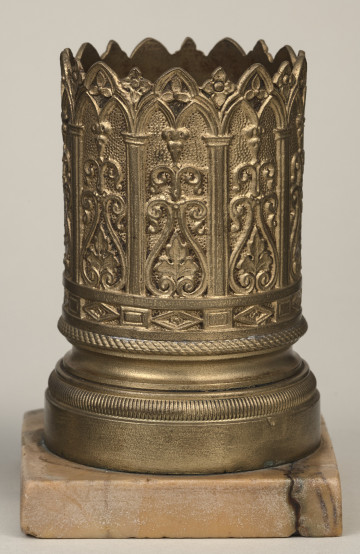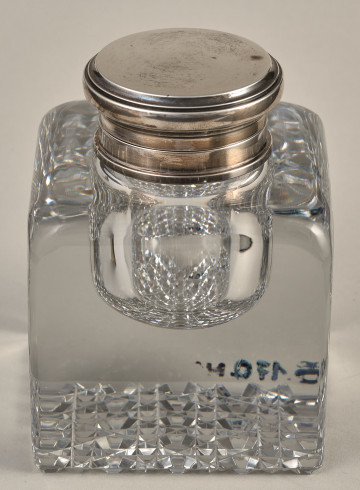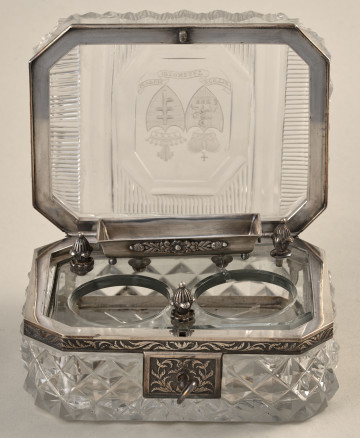
Pen container
19th / 20th century
Castle Museum in Łańcut
Part of the collection: Metale
Inkwell with a sandbox, from the museum’s collection, forming part of a desk writing set, designed in the neo-Gothic style, late 19th century. Two circular containers – one for ink (inkwell), the other for sand that sued to be sprinkled on the text to dry it (sandbox) are placed in a box-like casing. All in brass, cast, chiselled. A rectangular box, on a base wider than the walls, supported by four volute legs. The base is moulded, decorated with floral and architectural ornamentation. Walls entirely decorated with architectural divisions, with traceries and acanthus leaf framed by a double stylised bellflower. The edges of the walls crumpled and decorated with floral rosettes. The inkwell, concealed in the box, is recognisable by a domed lid, decorated with geometric ornament, topped with a handle in the shape of a stylised flower. The round sand box is incomplete, the lid is missing, holes for pouring sand are visible. Between the bins two marks of the missing carrying handle. The neo-Gothic style began to develop as early as the 18th century, first in England, then in Germanic countries, and finally became popular throughout Europe. It was dominant mainly in architecture as well as arts and crafts (in the German-speaking countries it gained great popularity in writing and printing with the so-called Gothic font). It is one of the historical styles, in Poland it was present mainly in sacral art. It is currently exhibited in the Turkish Apartment on the ground floor.
Object type
Metals
Creation time / dating
Owner
Castle Museum in Łańcut
Identification number
Location / status

19th / 20th century
Castle Museum in Łańcut

19th / 20th century
Castle Museum in Łańcut

19th / 20th century
Castle Museum in Łańcut
DISCOVER this TOPIC
Museum of King Jan III's Palace at Wilanów
DISCOVER this PATH
Educational path